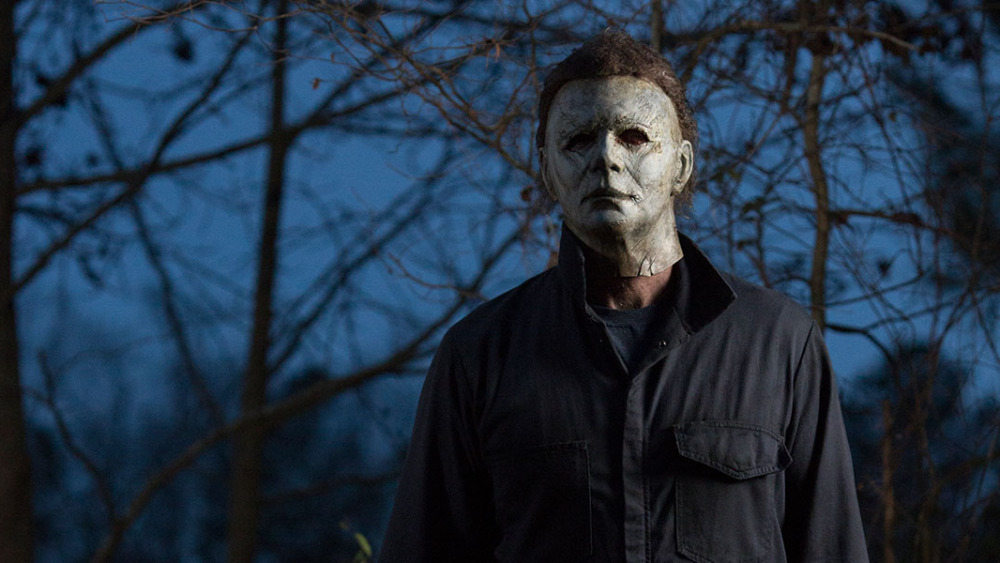
Halloween: Tricks & Treats of Movies and TV Shows
Every year, during the long buildup to Halloween, cable and streaming services offer a marathon horror-film lineup. (This used to be a North American phenomenon, but it’s being spread around the world.)
While it’s pegged to Oct. 31, there are actually very few films centered on that holiday, unlike Christmas, for example. Of course there is John Carpenter’s 1978 “Halloween” and its slew of sequels (including one in 2025), plus “It’s the Great Pumpkin, Charlie Brown” (1966), “Hocus Pocus” (1993) and “Late Night With the Devil,” a 2023 horror comedy from filmmakers Colin Cairnes and Cameron Cairnes about a talkshow host (David Dastmalcian) who attempts to conjure up Satan on Halloween to boost ratings. (Spoiler alert: It doesn’t go well.)
However, there are not many more. But multiple films feature Halloween sequences, like “To Kill a Mockingbird” (1962), “ET — The ExtraTerrestrial” (1982), “Kramer vs Kramer” (1979) and “Marriage Story” (2019); all of them were Golden Globes-nominated but the Halloween factor probably didn’t play a large part in their award successes.
Though the holiday isn’t central to a lot of films, movies and, more recently, TV offer a long history of scary works.
These date back to the eye-popping German Expressionism of “The Cabinet of Dr. Caligari” (1920, directed by Robert Wiene); “Nosferatu” (F.W. Murnau’s 1922 unauthorized but influential version of Bram Stoker’s “Dracula”); and memorable Lon Chaney vehicles including “The Phantom of the Opera” and “London After Midnight.”
Even in the early days, studios copied the success of others — talkies, musicals westerns, weepies — but for some reason, rivals declined to emulate Universal’s success with horror, like “Dracula,” “Frankenstein,” both in 1931, “The Invisible Man” and “The Wolf Man,” to name a few.
Scary films have always been popular and always a barometer of the public’s hopes and fears, such as the post-Hiroshima movies of the 1950s (“Godzilla,” “Attack of the 50-Foot Woman,” “Them!” “Tarantula,” et al.) and the post-Manson films of the 1970s (“The Hills Have Eyes,” “The Last House on the Left” and, yes, “Halloween”) In these films, the terror came not from giant monsters or mad scientists but by next-door-neighbor type weirdos.
It’s notable that the 1940s seem to have fewer great horror movies than any other decade, probably because audiences had their fill of real-life horrors during WWII.
In the early years of television, scary series were rare. They include The Twilight Zone, Thriller (hosted by Boris Karloff), The Outer Limits and Night Gallery. and later Tales From the Crypt, Kolchak: The Night Stalker, (1974-75).
But scary TV has blossomed in the 21st century, including American Horror Story (Golden Globes wins for Jessica Lange and Lady Gaga, plus seven other nominations), Stranger Things (4 Globes noms), Supernatural, The Walking Dead (one nom as best series), Buffy the Vampire Slayer (Sarah Michelle Geller was a Globes nominee), What We Do in the Shadows, Chucky, Alien: Earth, and Interview With the Vampire, to name a few.
The definition of horror is fluid. Are The Silence of the Lambs, King Kong and Woman in the Dunes horror movies? Are The Last of Us and Monster horror series?
Either way, it’s clear that we are consuming more scariness than ever. Is that because there are more platforms — or because we have more to be frightened of?

